In Eastern Canada, apples look to have a solid year.
According to the Canadian Apple Crop 2020 report from the Norfolk Fruit Growers Association based in Simcoe, ON, overall, the 2020 apple crop is projected at 18.7 million bushels—a 3.5 percent increase from 2019. It’s also a 10.4 percent increase over a five-year average.
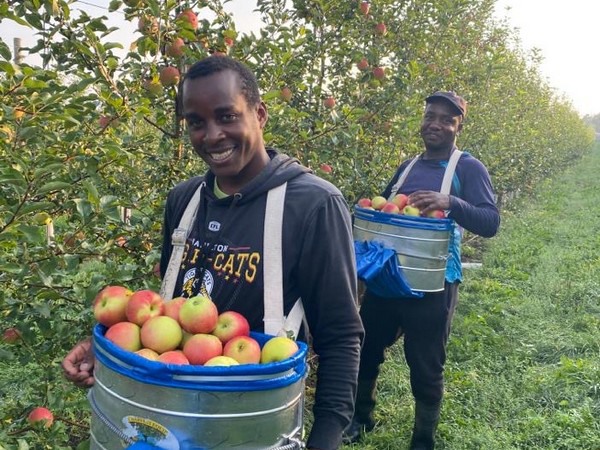 Photo: Norfolk Fruit Growers Association.
Photo: Norfolk Fruit Growers Association.
But here’s a closer look as to how two key producing provinces in Eastern Canada will do this season.
ONTARIO
According to the Ontario Apple Growers based in St. Catherine's, ON, apples are projected at 7.2 million bushels which is down two percent from 2019 and five percent over a three-year average. This is despite a good spring with little hail and lots of heat.
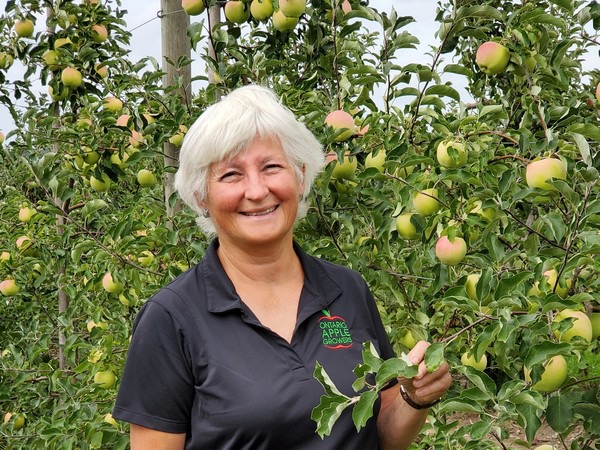 Cathy McKay, the Port Perry, ON-based chair of the Ontario Apple Growers.
Cathy McKay, the Port Perry, ON-based chair of the Ontario Apple Growers.
Norfolk Fruit Growers Association says it’s anticipating a solid full crop though throughout the province, projections vary depending on what regions received more rain. “Most of the main geographic growing regions got good, timely rain,” says Hayden Dooney of the NFGA.
More Honeycrisp coming
What is up is a key premium variety: Honeycrisp, which the report notes are up 16.3 percent this season. “We’re having an on year so there should be plenty of volume,” says Cathy McKay, the Port Perry, ON-based chair of the Ontario Apple Growers. “We’re also still seeing an increase in our Ambrosia, Honeycrisp and Gala plantings that have been occurring over the past few years in Ontario. We’ll probably continue to experience that over the next couple of years with additional volumes coming on.”
In terms of quality in size, Dooney notes that size correlates with the areas that received good rainfalls in the region. “The fruit size could be a little bit better but we’re happy with what we have at the moment,” he says. “And the flavor is really good this year.”
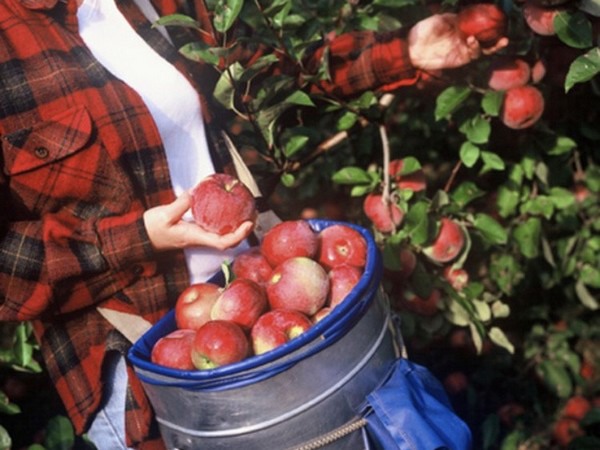 Photo: Ontario Apple Growers
Photo: Ontario Apple Growers
As for demand, expectations are optimistic. “If it’s anything like peaches, we’re expecting great local demand,” says Steve Roberts, also of the NFGA, adding that part of the impetus might be Ontarians looking to support local producers and businesses. “We also saw an uptick on bagged apples with the pandemic started. We had a 50 percent increase on bags,” says Roberts. ““Based on current discussions and market conditions, we are planning on a normal year breakout wise for bulk versus bagged apples.”
Difficulties getting labor
Like many growers across North America, Ontario has also seen its labor challenges. “People are getting labor but not the normal cohort, particularly with offshore labor,” says McKay. “Growers anticipate smaller crews and they’re thinking about the logistics of: which are the premium apples and what do we spend our time on?”
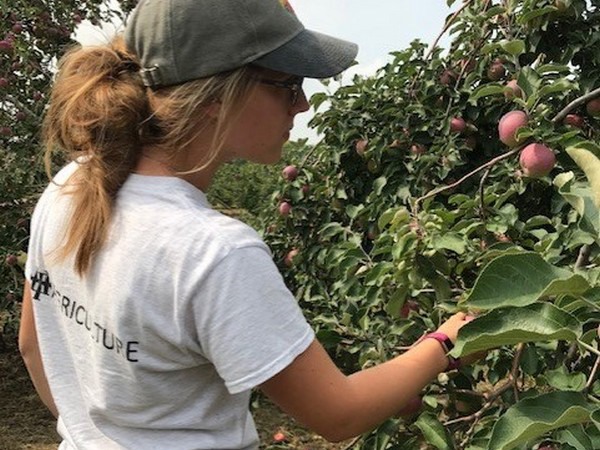 Photo: Norfolk Fruit Growers Association
Photo: Norfolk Fruit Growers Association
“It’s definitely a challenge at farm level. We have heard different stories from various growers on labour and how that is being managed. What we’ve seen within our network is a real willingness to cooperate among growers of different seasonal crops to make sure labor is in place where and when it is needed,” says Dooney.
As for pricing, that’s to be determined though there are increasing variables to factor in such as more packaging and less labor. “But pricing on apples, as a mature category, I don’t think it will be as impacted as other categories,” says Roberts.
NOVA SCOTIA
In one of Canada’s key Atlantic provinces for apple production, Michael Van Meekeren of Van Meekeren Farms in Kentville, NS anticipates a solid crop. “A lot of what we’re seeing might be Hurricane Dorian-related from last year,” says Van Meekeren. “The experts say there could be damage to the roots of trees and you don’t see it at the time, but when they become loaded with apples and the stress of the summer hits, the apples can drop off because the trees can’t handle that kind of crop.”
 Stephen Van Meekeren of Nova Scotia's Van Meekeren Farms.
Stephen Van Meekeren of Nova Scotia's Van Meekeren Farms.
That said, on average, it’s shaping up to be the best crop in three years. (Two years ago, the region underwent a frost affecting the crop). “So, we’re looking at a better crop with better quality,” says Van Meekeren.
Following last year’s crop which generally had a smaller size profile, the less consistent fruit on this year’s trees mean the fruit is sizing up. “Some varieties like Pazazz are quite large,” he says. “Pazazz harvests late so the hurricane didn’t pound on the trees that weren’t as full. Honeycrisp was wiped out last year but this year, it’s inconsistent. It’ll be up a bit but not with the numbers we should have had.” (The report notes that Honeycrisp is up 5.4 percent over last season.)
What will consumers want?
Demand is also expected to be strong, though there are some questions over what consumers will look for. “We’re wondering about varieties linked to a price. We sell some higher value varieties like Pazazz or Honeycrisp and we’re wondering whether there’ll be a slight move away from that because we know incomes are probably going to be down,” says Van Meekeren.
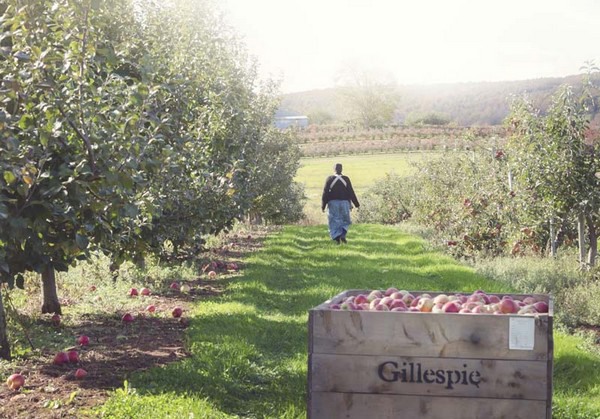 Gillespie Farms, one of the growers for Van Meekeren Farms. Photo: Van Meekeren Farms.
Gillespie Farms, one of the growers for Van Meekeren Farms. Photo: Van Meekeren Farms.
Like Ontario, Nova Scotia has also seen labor challenges. While the first cohort of offshore workers were able to arrive in full complement, the second cohort has been delayed or cancelled causing an overall shortage of labor. “And finding local labor was difficult. We needed more people for our packing facility this summer and it was challenging to find them because some were relying on their Canadian Emergency Response Benefit (CERB),” adds Van Meekeren.
Van Meekeren also anticipates pricing to rise due to the cost of production increasing. Yet, despite the challenges of the season, he points out an unexpected benefit from all of this. “I’ve never had so many discussions with farmers who feel they have a purpose and need,” says Van Meekeren. “Canadians are talking about how they need farmers and farmers are feeling recognized.”
For more information:
Hayden Dooney
Steven Roberts
Norfolk Fruit Growers Association
Tel: +1 (519) 426-0640
[email protected]
[email protected]
http://www.nfga.ca/
Kelly Ciceran
Ontario Apple Growers
Tel: +1 (905) 688-0990
[email protected]
http://www.onapples.com/
Michael Van Meekeren
Van Meekeren Farms
Tel: +1 (902) 678 2366
[email protected]
https://givethemawink.com/
